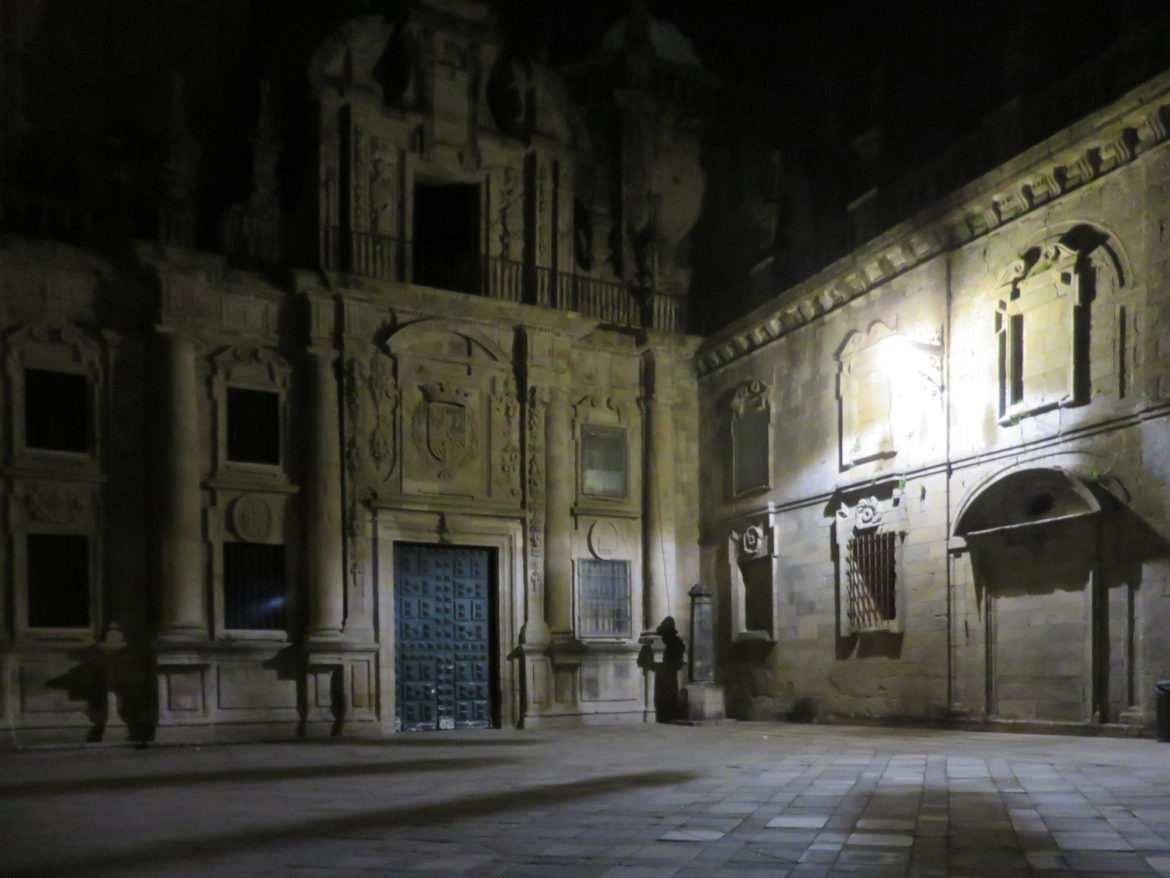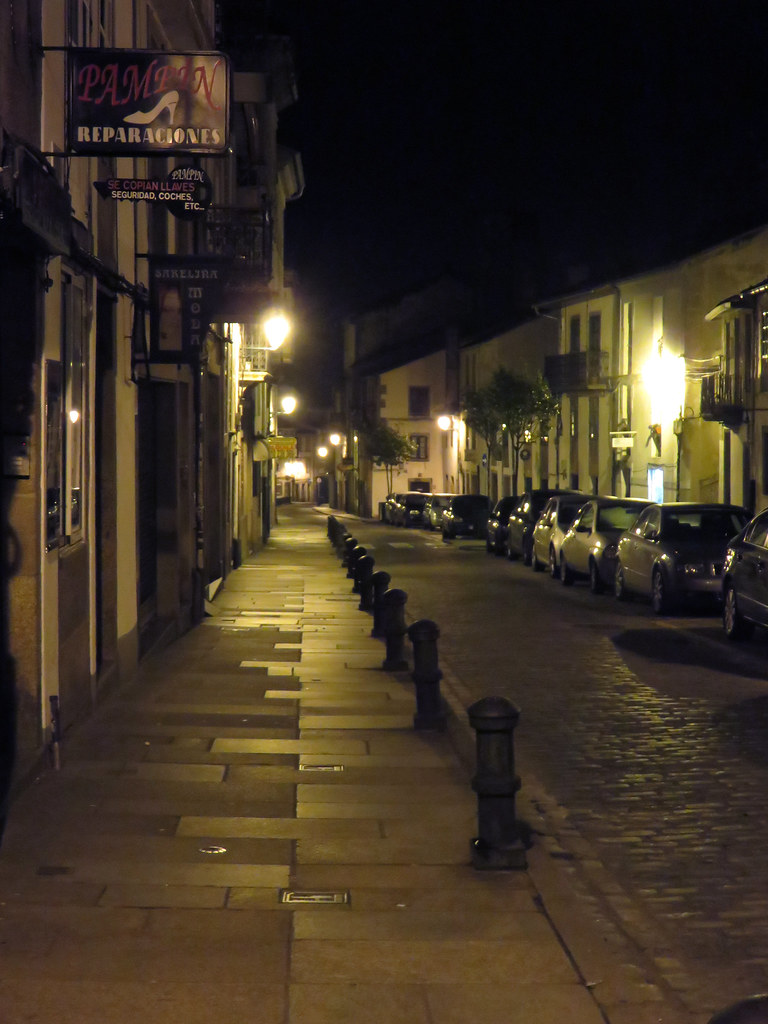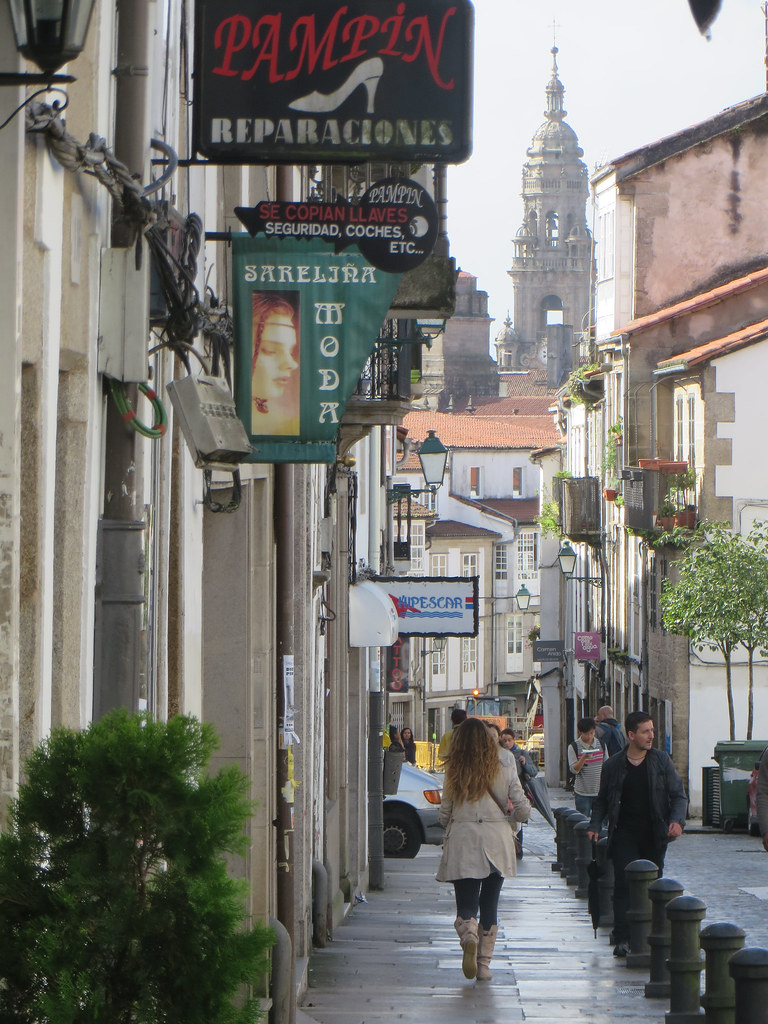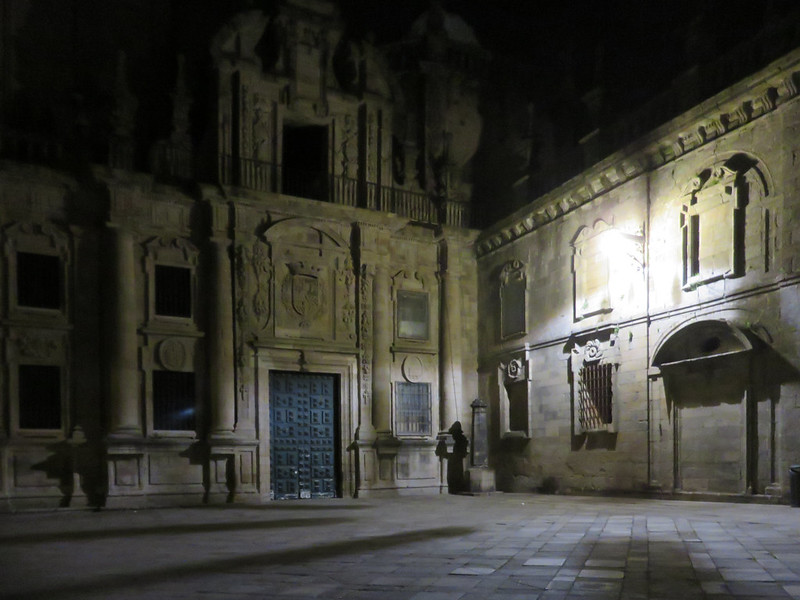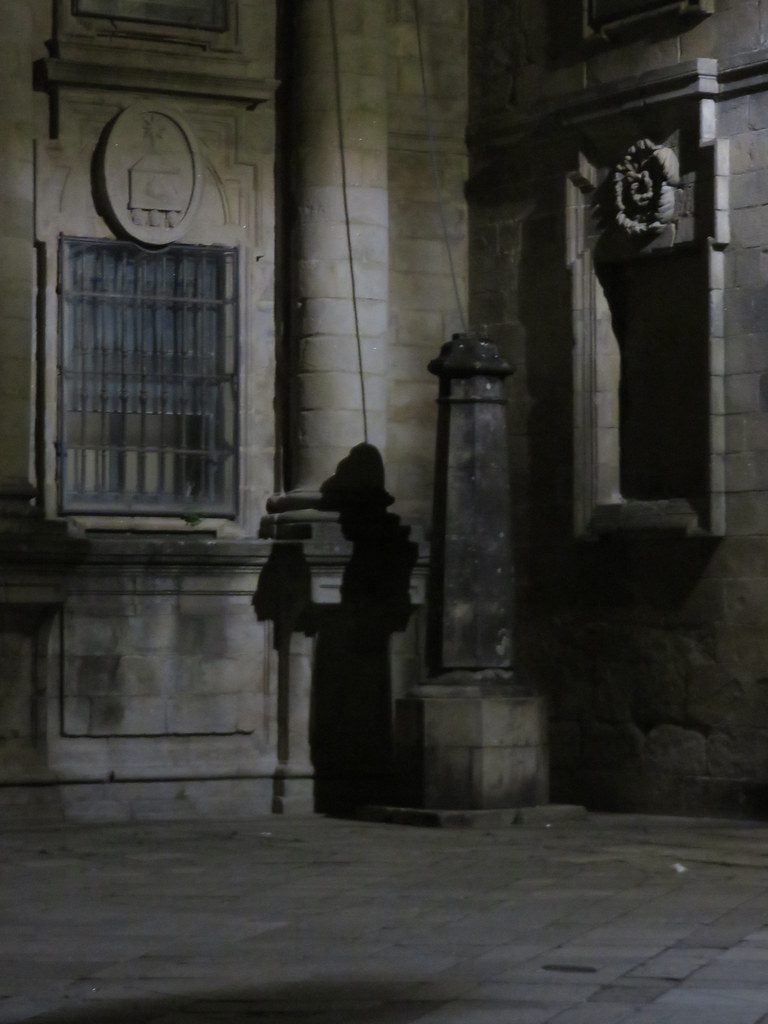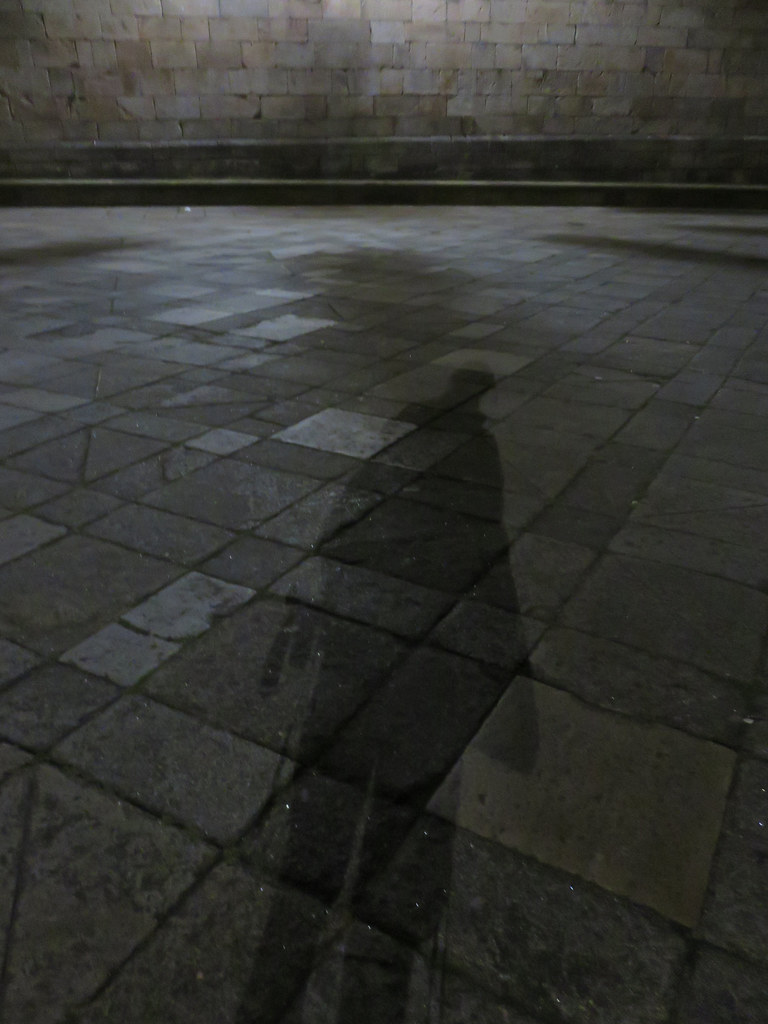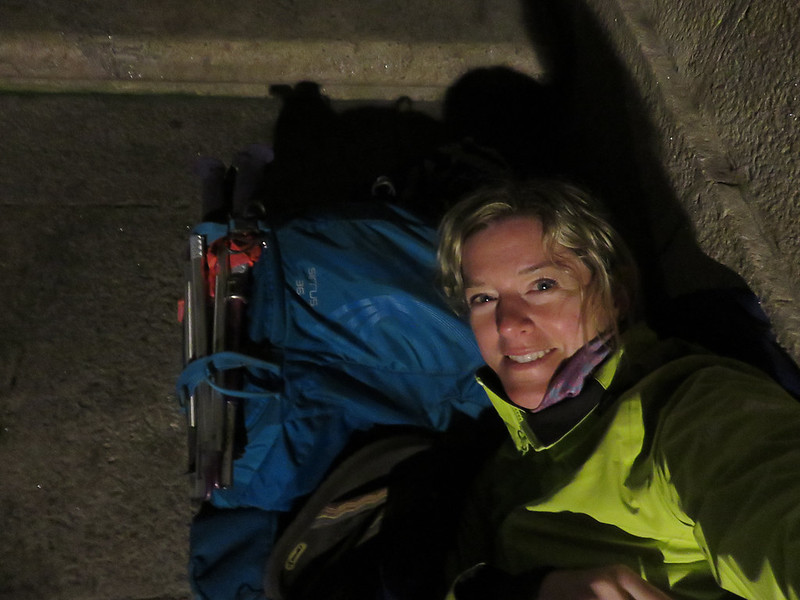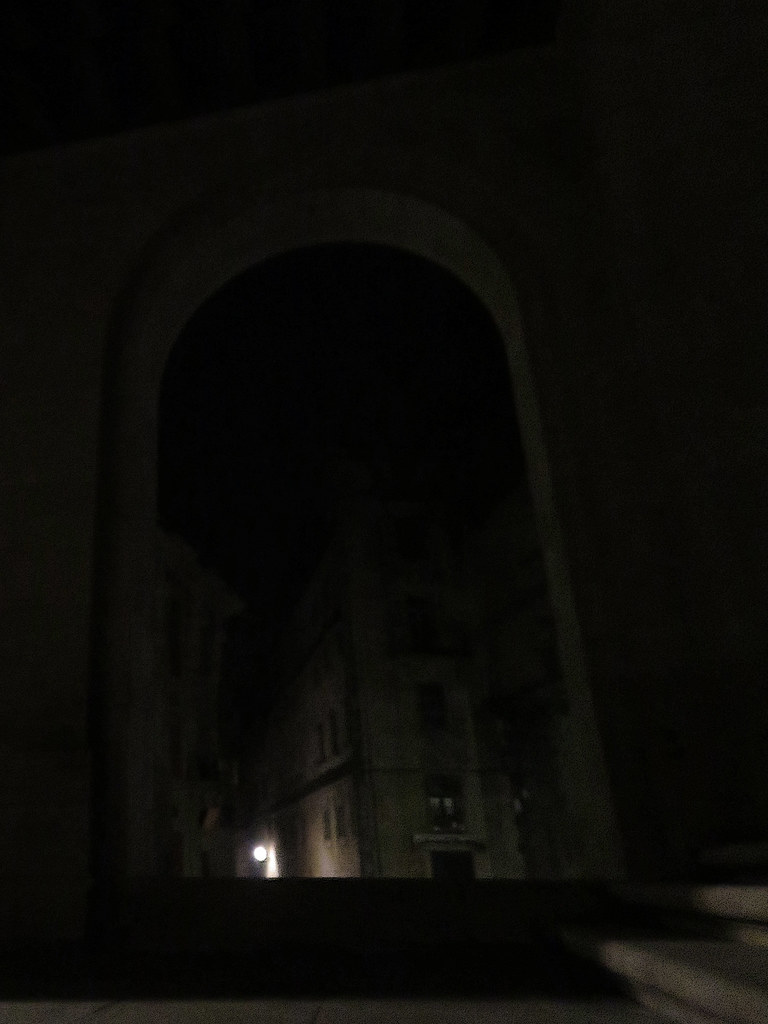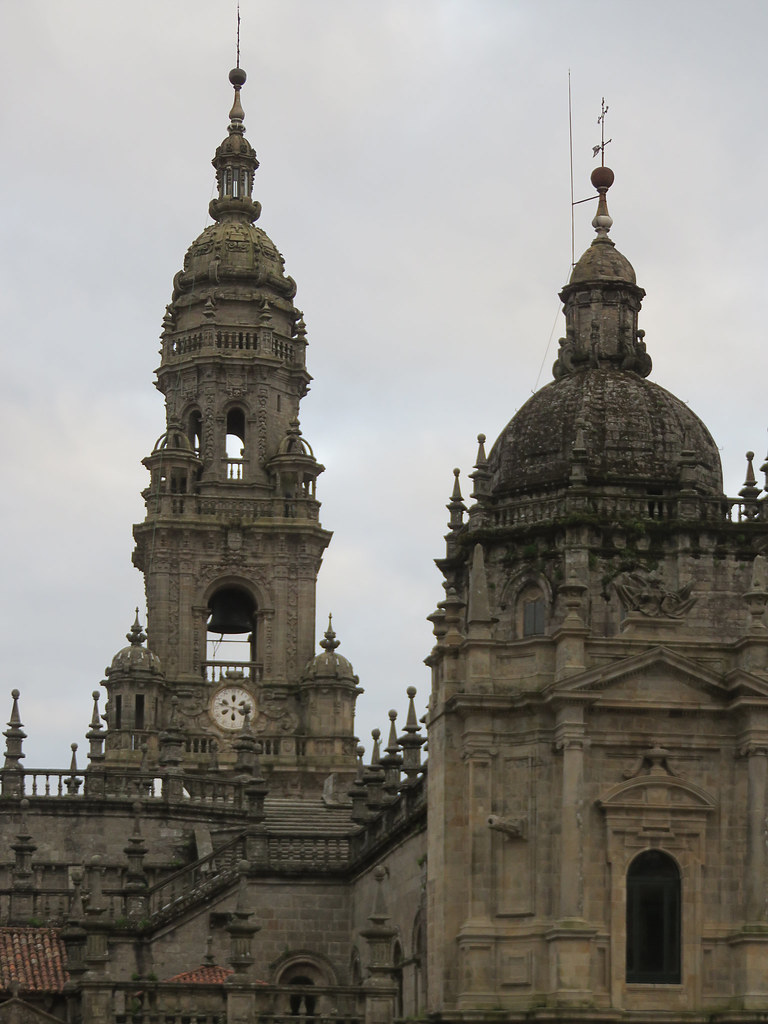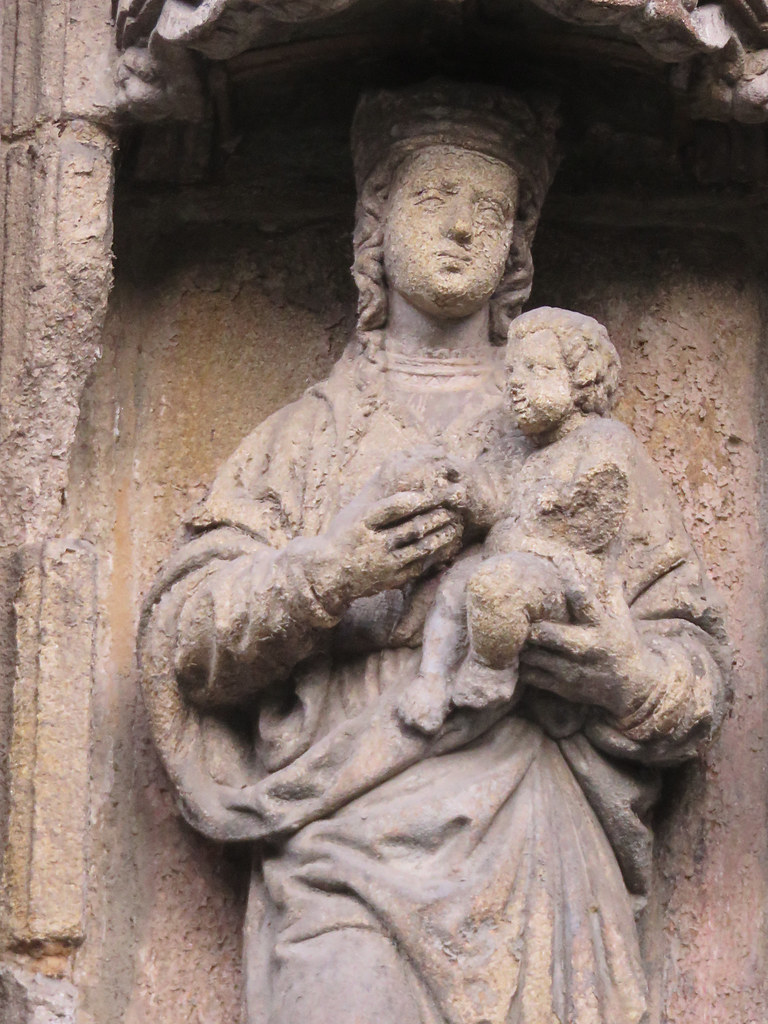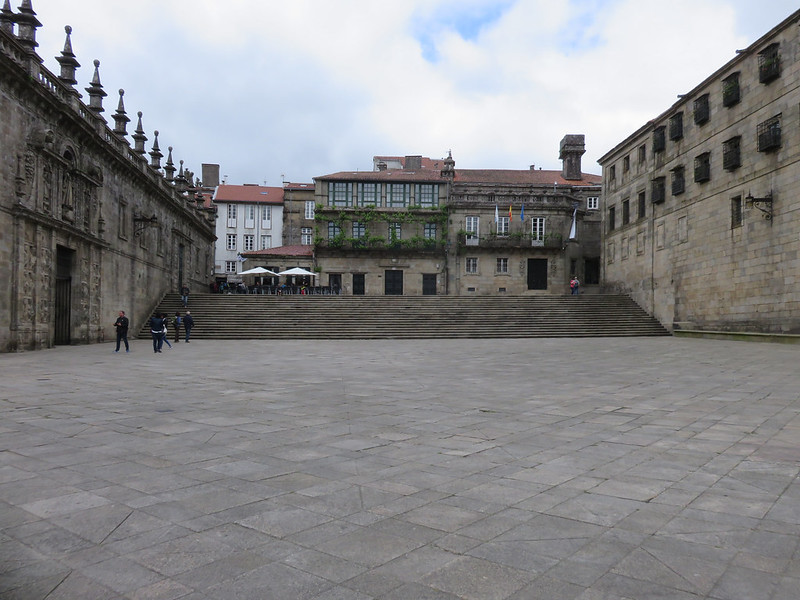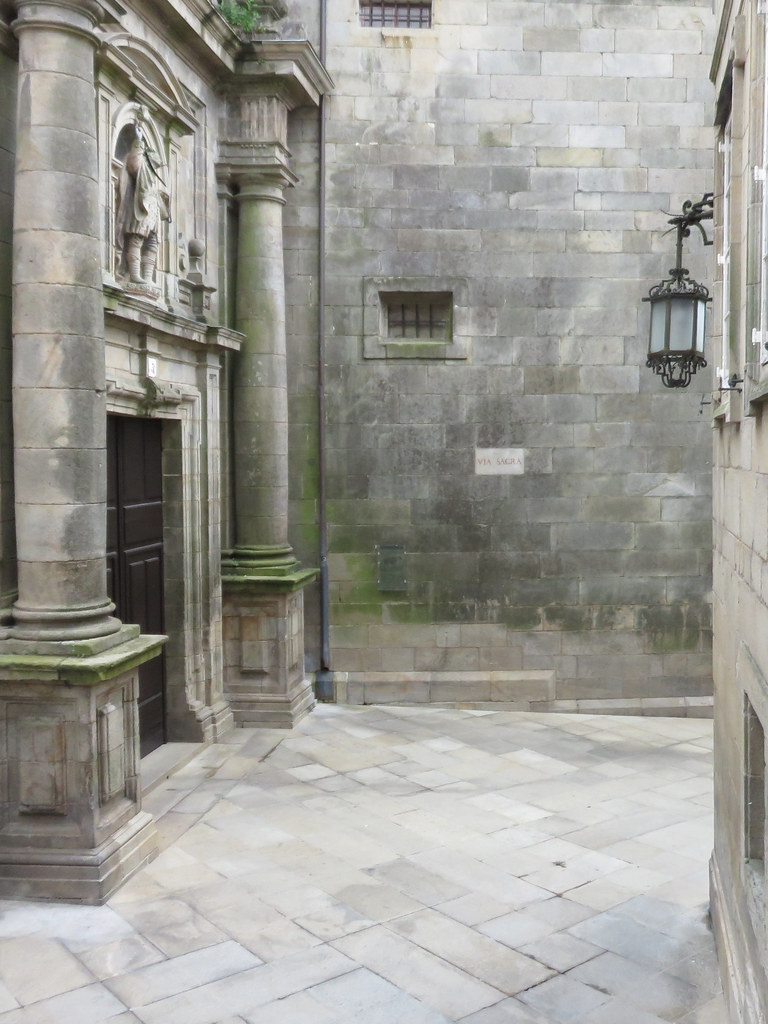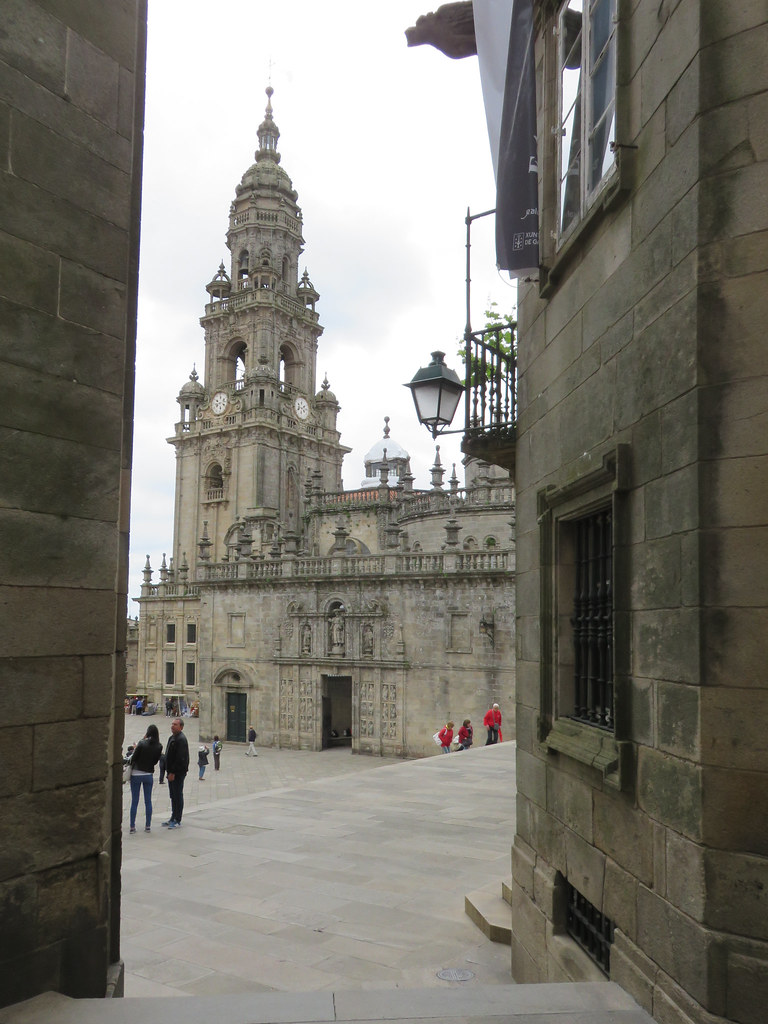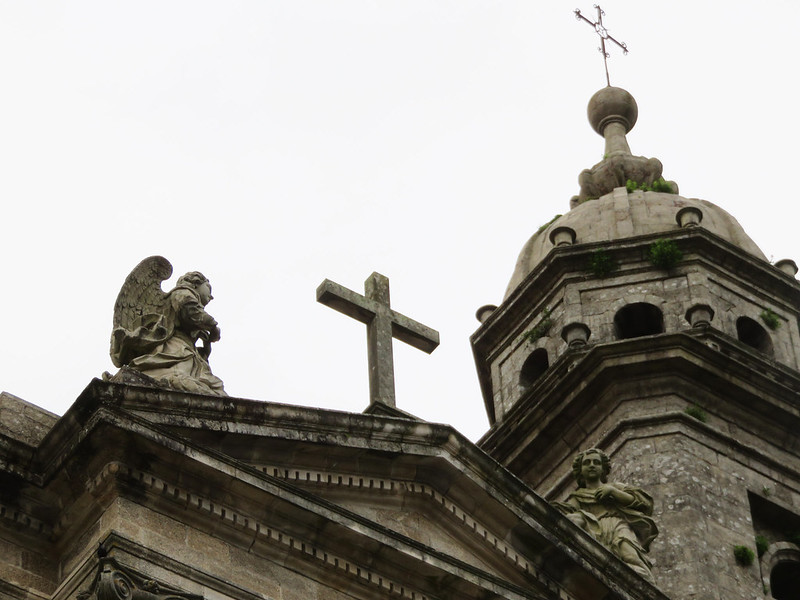The twelve-hour bus ride to Santiago was tiring. I didn’t sleep much. There were three drivers in total, one handing the bus off to the other like a baton in a relay race. The last driver blared some high-energy tunes, likely to keep himself awake for which I suppose I should have been thankful. Furthermore, it’s not easy to sleep upright with your feet confined to the floor inside bulky trekking boots. My first attempt to remove them was thwarted. The bus driver tapped his finger on the Spanish sign behind the driver’s seat, then pointed to my boots and shook his head. While he was driving I slipped them off anyways and curled up against the window. When the bus arrived at 4:00 a.m. the driver scolded me in rapid Spanish while I tied my boot laces up.
I hauled my pack out of the luggage compartment and began walking. The air felt damp and frigidly cold. The dark grey stone of the ancient city sucked the light out of the atmosphere like a black hole. The yellow arrows and scallop shell symbols seemed invisible and I got lost.
A taxi crept down the street and slowly came to a stop outside a locked-down establishment. A woman got out and pulled up a metal garage-like door. The street didn’t look familiar. I approached the taxi and asked the driver for directions to the centre of the old city. He probably wondered why I didn’t just hop in the back seat and let him drive me. It’s the way of a pilgrim I guess, however I didn’t feel like I fit that role. Taking a bus wasn’t the way I had envisioned getting to Santiago when I originally planned this trip.
Eventually I found the Camino. Store-fronts were barred and locked up. A sign stopped me in my tracks. It was familiar. I had stopped here last time I walked this street. It was where I first glimpsed the Santiago cathedral two and a half years ago.
I couldn’t see it though. It was veiled in darkness. It’s kind of ironic when I think of it now. I couldn’t see any of the Camino the way I saw it the first time. Everything was shadowed with old memories. My state of mind wouldn’t allow the brightness of “new” in. The fact that I couldn’t see the cathedral was kind of fitting.
Eventually I found the old cathedral, its stone contours etched in the deep blacks and charcoal grey’s of night. A shadow startled me. It looked like an ancient hooded pilgrim holding a pole. The resemblance was uncanny, but it was just shadows cast by a post and the contours of a stone wall.
“If only these walls could speak,” I whispered. There is such history here, even my own stories that I hold close to my heart. These walls know what happened, each special place whether the steps I climbed to the cathedral for the first time in awe, the ones I climbed while holding my Camino buddy’s hand, the top of the steps where we embraced, the place we stood when the bell tower tolled 3:00 a.m. knowing that I would have to say goodbye; special moments now vacant, gone, empty. All that was left were memories and shadows like that hooded pilgrim. They were there but not really.
You can’t dip your toe into the same river twice I’ve heard more than once. Logically I knew I couldn’t relive the old journey. It’s the reason I originally chose the Camino del Norte route, but like the draw of an old flame, I couldn’t stay away from the French Way. No matter what logic told me, my heart didn’t want to listen. Expectations hid in the corners of my mind even though logic tried to keep them out. Memories surfaced everywhere I walked.
The reason I returned to the Camino at all was more to do with my heart. I wanted to recapture the magic. The last time it changed me so much that I thought it – the Camino, Spain – was the prescription for my happiness. It’s funny that I didn’t think I could possibly get that at home. But why not? Why not anywhere? All I would need to do is change my mind.
It was really my state of mind back then, that dry sponge that soaked everything up around me, that allowed for such a beautiful journey. This time the sponge was waterlogged with memories. It was impossible to absorb new ones when I couldn’t wring out the old ones. With each place I passed, memories of special moments, of lessons, growth, friendship, sharing, synchronicity, happiness and tears surfaced. It was like another life, though, and this a new one. The only difference is that I could recall this old life. It was everywhere I walked, even in Santiago.
Everything was closed up. No albergues, pensions or hotels were open this early in the morning, so I climbed into my sleeping bag in front of the museum beside the cathedral and tried to sleep.
A street cleaner slowly motored along the cobbled street spraying water. The operator got out and began hosing the sidewalks of broken glass and debris from the previous night’s celebratory parties. He wasn’t going to stop for me so I packed up. It was light out by then, but still an hour before cafes and hostels opened. I knew where I would go, the Last Stamp Hostel, and then I would figure out what to do next.

